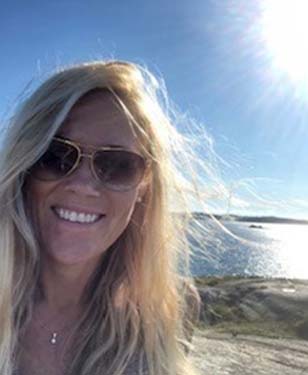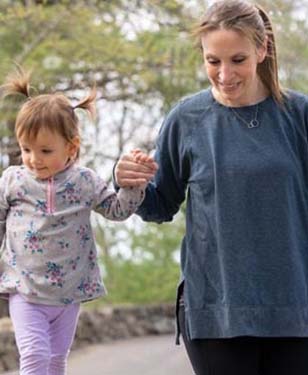Første gang Nathan spilte power-fotball, i en alder av syv, ble han forelsket. Da han fikk diagnosen spinal muskelatrofi (SMA) i ung alder, var fremtiden usikker med tanke på hva han kunne oppnå. Nathan streber alltid etter å overgå det som forventes av han, og det å konkurrere i en sport bekrefter hans drivkraft og ønske om å bevise at han ikke er definert av diagnosen sin.
Å leve med SMA – Nathan sin historie
27. september 2022
Transcription
“I’ve been playing power soccer for 17 years now. The first practice that we went to, when I was five or six years old at the time, I was obviously brand new, so I didn’t really know what I was doing, but... I fell in love.
I was able to compete. I was able to do a sport on my own. I knew from that moment forward that I found the sport for me. It was me playing. It was me being competitive, and it allowed me to be an athlete and compete at a high level.
When I was diagnosed with SMA, we weren’t sure if I was going to be able to play sports or not. I was born with this condition; it makes my muscles weaker over time, and it makes things like swallowing and eating and just doing general tasks very difficult.
I wasn’t expected to do much in my life, so I always want to go forward and keep pushing that boundary, I guess. That feeling of always wanting to strive and go beyond what’s expected - I think is really important to me.
My dad has been my coach for soccer since I started, so we really learned the game together and he is my biggest motivator, but he’s also my biggest fan too. Yeah, it’s been a fun bond with him and I, being able to kind of learn the game together and win four national championships together going for a fifth here in two weeks, so yeah, it’s been pretty cool.
Every team that I've been on has been a very close-knit group, whether it’s my Minnesota club team or the U.S. national team, we are all a super close-knit group. Off the floor, we rarely talk about soccer, we just talk about random things. We are just regular people that use wheels instead of feet. I’m an athlete, I’m a designer, and I’m a family person.
I wanted to be as normal as I could. Like, expressing my interests of sports and design and accessibility and not focusing on my disability as a bad thing. Yeah, it’s hard. Yeah, it’s different, but now let’s live life and move forward. It took me a while to actually, embrace that, but that’s where I’m at now.”
Biogen-226466

